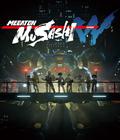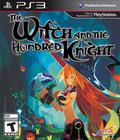It can be tough to create a video game character. You need to strike just the right balance to develop a protagonist who's compelling enough to keep people coming back even if he or she isn't particularly likeable. This can be even tougher in an RPG with a large cast of characters, especially if the most disagreeable ones get the most dialogue. The Witch and the Hundred Knight is a prime example of why this balance is so important. Players can enjoy evil characters, but unlikeable characters can tarnish the entire experience.
The Witch and the Hundred Knight tells the story of the titular Hundred Knight, who is a familiar spirit that is summoned by a swamp witch known as Metallia ("Lia," for short). Lia is cruel, nasty, and wants to spread her swamp across the world, complete with death and destruction. The Hundred Knight is pressed into her service and must obey, but he only has 100 days until Lia dies, and there are inquisitors, monsters, and other witches standing in his way. Naturally, Lia's story also isn't as simple as it sounds.
The Witch and the Hundred Knight attempts to mimic Disgaea's "wacky but evil" ideas but doesn't do very well. The game is genuinely unpleasant to play. Lia is foulmouthed and unpleasant, and the title tries to play off her evil antics as "funny," but they're not remotely amusing. One of the first chapters in the game ends with Lia calling a woman obscene names while kicking her in the stomach until she vomits blood. The attempts to elicit sympathy for Lia's tragic story simply don't work after you've spent most of the game hating the abrasive character. The rest of the cast isn't charming enough to balance her out, although some are certainly more likeable.
The game is packed to the gills with weird and esoteric systems that could use a nice, simple tutorial, but The Witch and the Hundred Knight does an awful job of explaining any of it. Basic gameplay mechanics are unexplained — except for random tips that appear on loading screens. Most Nippon Ichi games go out of their way to make sure you understand every mechanic as it's unlocked, but this title goes in the opposite direction. Want to know what those dots next to your weapons are? Not clear on how to consume enemies? Unsure of what the enemy's mood matrix means? It's possible to puzzle out the gameplay mechanics, but you have to be willing to work with the game, and understandably, a lot of players may find that unsatisfying.
At the very core, this is a simple hack-and-slash game. You control the Hundred Knight and bash and smash your way through hordes of enemies. You can equip up to five weapons, and they form the base of your combo. Each press of the attack button slashes with the next weapon in the list. You can perform strong, jumping attacks, and guard. There's even a dodge move that lets you go into slow-motion after you dodge an enemy attack, Bayonetta style.
Enemies drop loot, and equipping them on your guy powers him up. Your goal in each area is to unlock pillars, which serve as checkpoints and power-up stations.
The big gimmick the game has is the Giga Calories (or "GCal") system, which resembles the hunger meter in titles like Shiren the Wanderer or Z.H.P. The knight's actions are limited by the amount of calories he's consumed. You begin with a full stomach, and it gradually decreases with every action you perform. Attacking, moving or using certain special abilities all drop the GCal meter. If you die in combat, you respawn at the latest checkpoint but lose a big heap of your GCals. If your item slots are all full, you can't devour anything else. Finally, you can spend Grade to refill some of your GCals. None of these fully refill your calories, but they provide about 10-20 % of a full bar.
It's actually pretty easy to replenish your GCals. Any pillar you find in a stage can return you back home, and it also lets you jump right back in with a full stomach. This has to be balanced with the Bonus and Grade mechanics. Bonus is similar to the post-stage bonus mechanic from Disgaea. As you kill enemies, you'll accumulate bonus points. When you leave a stage, either via pillar or by completing it, you're given items from your bonus list, based on how many points you accumulated. When you slay enemies in the field, you earn Grade points, which are a temporary leveling mechanic. At any pillar, you can spend Grade to upgrade one of your stats, refill your GCals, or add points to your Bonus gauge. However, like the Bonus gauge, these are lost when you leave. Stay in the field without returning, and you get stronger. Retreat, and you'll start from scratch.
The Facet system is a combination level system and job system. You can equip different facets on the knight to influence his abilities and stats. They can alter everything from his combat prowess to how much Grade he earns or how quickly his hunger meter vanishes. You can equip multiple facets at once and switch between them at will, and they level up and gain experience once you leave or finish a stage.
Weapons also function in a similar manner. The more you use a weapon, the more powerful it gets. A weapon's limit is determined by its rarity and rank, so rare or powerful weapons are more useful. Each weapon has an individual attack type, so it's worth swapping between them frequently, since blunt and sharp weapons can be useful against different foes. This makes it possible to grind through tough areas via repetition. The fact that you'll respawn at a pillar after you die means you can give up, take the bonuses that are present, and start over later.
I've listed the mechanics you'll need to be successful in The Witch and the Hundred Knight, but the game has some other quirks. Every enemy has a "mood matrix" that is influenced by how well you're fighting them. You can make them angry, happy or terrified, and they'll respond in different ways. Villages and towns can be raided, which forces them to the side of the witch and earns special items but requires you to be at a certain level. Your Knight can occasionally speak in cut scenes via a few dialogue choices that can have minor impacts on what occurs afterward. A lot of them serve to just muddy the waters, though. Unlike Disgaea or Z.H.P, mechanical skill is more important than mechanical knowledge.
The combat system mostly relies on positioning and timing. Both regular enemies and bosses can easily overwhelm you if you run in, slashing wildly, and that's also a good way to waste your GCals as well. You generally want every attack to do as much damage as possible to preserve GCals and health. Unfortunately, this means you'll have to switch weapons a lot, and that can be annoying. A lot of enemies are vulnerable or resistant to different types of damage, so the optimal way to handle an encounter is to switch your weapon loadout to emphasize the proper damage type. You'll probably use a suboptimal configuration to avoid frequent weapon switches. This is entirely possible except against highly resistant enemies, but it feels a little frustrating that this mechanic isn't easier to use. Still, attacking, block and dodging all feel fairly smooth aside from some minor problems with camera angle and enemy attacks. It's generally a fair game, but it can be punishing if you're not careful.
Unfortunately, The Witch and the Hundred Knight may be one of the worst-looking games Nippon Ichi Software has released. Rather than the traditional and charming 3-D sprites, it uses some lower-budget 3-D models that are stiff, lifeless and lacking in detail. Several times, I had no idea what a character was supposed to look like until the 2-D art appeared. Many resemble PS2-era models more than they do anything from the modern generation. The environments are drab and unpleasant. The isometric camera angle does little to improve this. The entire game looks blurry, especially on an HD TV. The 2-D art stands out from the usual NIS house style, but there is a noticeable lack of variety to it. The soundtrack is the same sort of usual pop-cheer that you hear from the Disgaea games, but that seems pretty out of place for a game that is significantly darker.
The Witch and the Hundred Knight attempts to mix Disgaea and roguelike games. While Z.H.P did well in this endeavor, The Witch and the Hundred Knight is a muddled and poorly designed experience. It lacks focus, and rather than building upon itself, it's something that only the most dedicated players can appreciate. Far more of a problem is that it fails to stick the landing with the story. An attempt at making a dark game goes above and beyond into the realm of unpleasant. Even the parts of the gameplay that work well make it difficult to stick around and be Lia's servant. The game has interesting elements, but you need to dig so deeply to find them that it almost isn't worth it. Even hardcore NIS fans may find the plot too hard to stomach.
Score: 6.5/10
More articles about The Witch and the Hundred Knight










 Adopting high-res, fully 3-D environments and characters, and a dark fantasy world brought to life by Takehito Harada, The Witch and the Hundred Knight delivers a new action RPG experience.
Adopting high-res, fully 3-D environments and characters, and a dark fantasy world brought to life by Takehito Harada, The Witch and the Hundred Knight delivers a new action RPG experience.








































